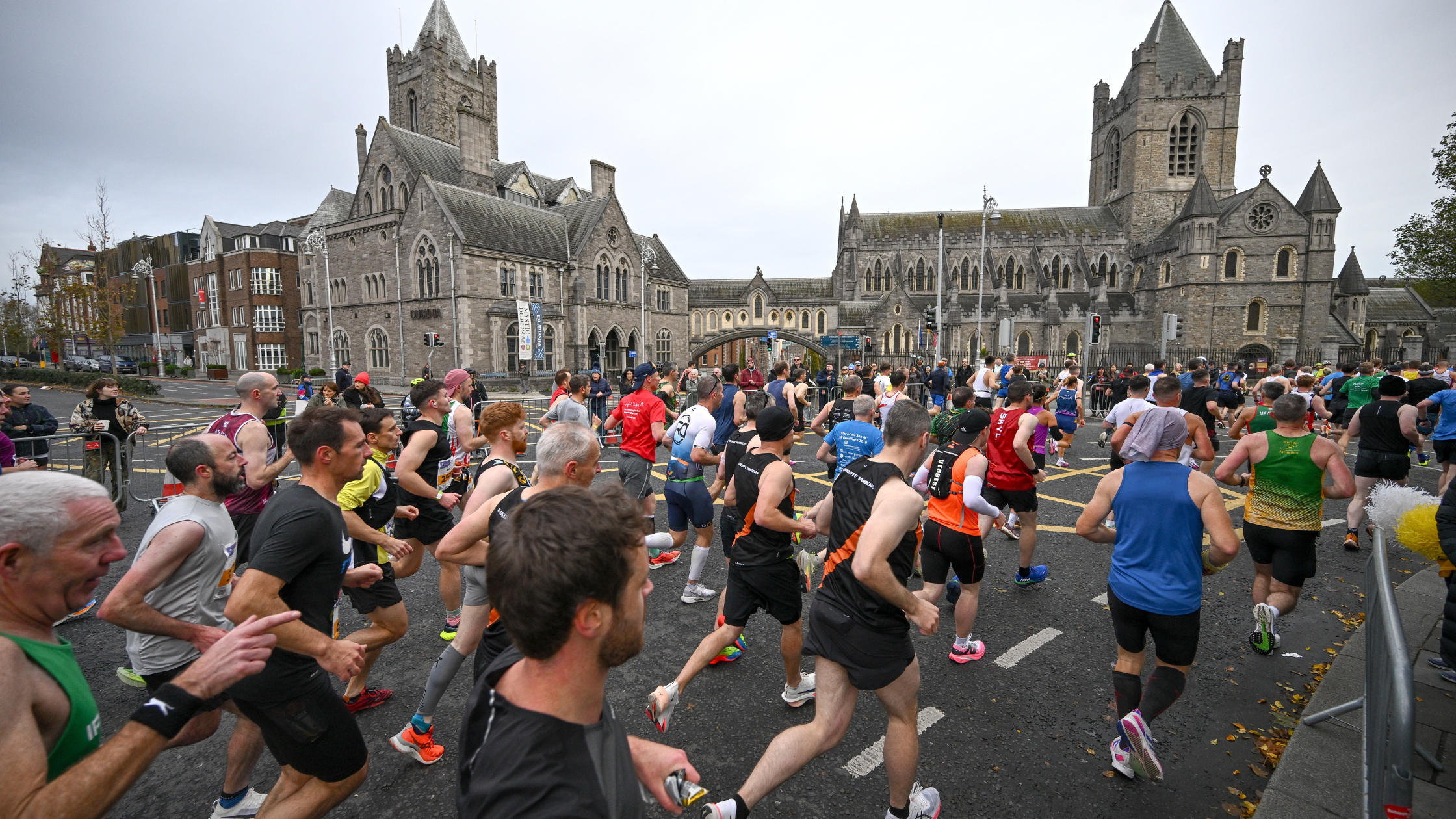Preparation for a good race comes not only from the physical training you undertake, but also from mental preparation. It's possible to find that extra few per cent in performance terms through mental techniques both before and during running.
Imagining running success
Thoughts and images can create neuromuscular impulses that bring about a response. The implications for the runner are clear then in that since our bodies tend to do what they are told, all we need to decide is what to tell them. Sounds simple?
There are two forms of mental imagery — internal and external.
-
Internal imagery has been described as where the athlete 'actually imagines and feels the sensations that might be expected when competing in a situation,' (Mahoney).
-
External imagery is where the person 'views themselves from the perspective of an external observer,' i.e. you see yourself running.
Mental imagery has been used by athletes for some time, especially those in more technical events such as the high hurdles, the high jump, or long jump, yet imagining running success is useful too.
It is not uncommon to see athletes close their eyes before the start of the event as they try to visualize the event.
It is not uncommon to see athletes close their eyes before the start of the event as they try to visualize the event. If you study their body movement, you see many of them running through their event step-by-step, even if they don't actually move from the spot on which they are standing. These athletes are imagining themselves participating in their event and their muscles seem to twitch accordingly.
A runner may sometimes identify a flaw in their running technique , and mental imagery can be used to make the necessary adjustment. Using both internal and external techniques, the runners can picture themselves running the race well, as if being a spectator of themselves (external imagery). The internal imagery will concentrate on picturing yourself actually doing the event, not watching it from afar.
Controlling emotions with mental imagery
Emotions can have a massive effect on performance. A lack of emotion may produce a lifeless performance, while too much emotion can lead to a lack of control. Mental imagery can be used to give the athlete a sense of calm or quiet confidence (like Paula Radcliffe), or they might prefer to view themselves as brash, bold and intense (like Usain Bolt).
Repeated use of mental imagery can help runners acquire these skills. Using mental imagery training can challenge your attitudes and perceptions of your abilities. Try imagining running success, you'll reap the benefits!
Mental imagery practice tips
- Practice in a quiet place for 5 to 10 minutes
- Try external imagery first. See yourself running with your current technique and level of fitness. Imagine things that you can control: your effort, the energy that you can bring to the run, an efficient technique.
- Repeat this process every day for a week. Consider it a regular part of your overall training.
- Once you are in a mental training routine, identify some areas that you would like to improve. Maybe it is an improvement in your choice of race tactics; perhaps it is some aspect of emotional control.
- Incorporate the desired change into your imagery and practice, regularly.
- After a fortnight of using external imagery, try to develop your internal imagery techniques. In a 10 minute session do 5 minutes of each technique.
Much of what has been discussed thus far focuses on imagery techniques where the runner prepares themselves before the actual act of running. But what about mental techniques for the runner while they are in the act of actually running?
Clearly, there are runners who can churn out endless kilometres on the road with the almost effortless efficiency. They can flow across the race surface, not appearing to show any signs of fatigue, and yet they are those running at nearly twice the speed as you probably are.
So how do they sustain that sort of pace and concentration, when your body is pouring fatigue into every sinew. Aside from being better prepared physically, some of the answer lies in mental toughness . So how does the struggling runner start to use their own mental skills to improve performance?
Two techniques — association and dissociation — offer some interesting possibilities for the runner:
Association
A technique that requires the endurance runner to concentrate on many aspects of their physical condition. The runner repeatedly runs through a mental checklist of signals from the body ensuring that everything is operating in a range that will allow him or her to complete the race at an optimum rate. For example, runners might ask themselves a number of questions while they are on the move, such as: 'is my breathing relaxed? Is this a pace that I can sustain? Are my muscles tightening or cramping? Could I actually increase my pace?'
The runner looks out for the physical signals, and responds accordingly with a tactical adjustment such as slowing down, speeding up, or focusing on their running form. The purpose of this technique is to keep fatigue at bay as long as is possible. Research suggests that this technique is most effective for elite runners.
Dissociation
A technique that trains the runner to block out thoughts of fatigue. The runner is encouraged to think about anything that will distract them from the fatigue they may be experiencing. This could involve techniques such as thinking of a happy memory or reciting a favourite poem or song — anything to distract you from the fact that you are actually running. Studies have shown that novice runners who use dissociation strategies improve their times much more than those runners (who follow the same physical training program) who primarily use association strategies.
Tests with runners that have been trained to use the dissociation technique have found that their perception of exertion becomes manipulated; essentially the runner learns to ignore their fatigue.
Tests with runners that have been trained to use the dissociation technique have found that their perception of exertion becomes manipulated; essentially the runner learns to ignore their fatigue.
There are potential risks associated with dissociation techniques because a runner may ignore warning signs. There have been cases where runners have suffered serious dehydration because they failed to recognize the body's signals of distress. Dissociation may also reduce the runner’s ability to make rapid decisions in response to race tactics. Runners who 'switch off' by using dissociation may start to lose their sense of pace judgment and find that they have been slowing down without realising it.
Another study has suggested that dissociation may contribute to a runner 'hitting the wall' on the basis that the he or she ignored the physical signals that indicated they were running too fast.
So which technique is best?
A combination of both techniques, association and dissociation, is probably the most effective. Try this strategy next time you race, 'tune in' to your physical signals by monitoring your breathing; learn to relax when tense; relieve muscle tension by adjusting your pace; read your energy levels — and be honest in your assessment ... can you really keep this up? If all is well then 'tune out'.














